Why are we talking about rewilding?
Rewilding can help reverse species extinction, tackle climate change and improve our overall health and wellbeing. Rewilding will:
- Increase tree and plant life which will sequester carbon from the atmosphere, thereby reducing air pollution and cleaning the air we breathe;
- Help to reverse biodiversity loss by providing more land for natural habitats. More than half of UK species are in decline and 15% is threatened with extinction due to lack of wild habitat.
What are we going to do?
This project seeks to re-wild and green available US land (by ‘rewilding’ we do not mean abandonment!). Our focus is currently on unused areas of our cemeteries as well as shuls with large car parks and surrounding space.
Over 15 acres of unused burial land is now being managed to support biodiversity and wildlife. Please find below a detailed report of all sites and you can find more information on our historic cemeteries here.
The United Synagogue Burial Society is making significant strides towards enhancing the biodiversity our land can support. We do this while ensuring the cemeteries are well cared for and utmost respect is shown to the deceased and their families.
Alderney Road Cemetery (0.25 acres)
This cemetery is regularly visited by the Hasidic community mainly and our ground staff strim all the areas. The only weedkiller that is used is on the main pathway. The whole cemetery is grassed over and looks very well kept, with substantial mature trees and shrubs.
We planted wildflower seeds on the bed as you enter this cemetery in March 2023.
Laureston Road (0.50 acres)
Mature trees cover this site. There are two fenced areas either side of the main gates that were previously weed killed. This was sown with a wild flower mix in March 2023 to enhance the biodiversity and enhance the visual amenity of this area. We have also planted a wild flower mix to the front area of the cemetery to the right of the gates, approximately 10 square meters.
Weedkiller is now only used on the main pathway which only runs halfway up this cemetery.
Brady Street (3.3 acres)
The whole site is covered with mature trees and shrubs and varies in height levels due to double height burials. The only area where weedkiller is now used is the pathway that runs around the perimeter of this cemetery. The rest of the site is strimmed on a rolling programme by the ground staff. We are looking to purchase new wheeled stimming machinery to allow the grass to stay higher and protect more wildlife.
The entrance area to the left of the path will be left to grow and sown with a wild flower mix to encourage the wildlife. This will be approxiamtely 20m x 5m.
Dover Cemetery (0.55 acres)
This cemetery has a main double entrance gate and then a steep hill leading up to approximately 10 rows of graves. Only the grave area is weed killed to ensure access. The rest of this site is grassed, with mature trees.
We have cut a strip from the entrance gates, up the hill to the grave area only. The rest of the site (approximately 50%) has been allowed to mature into a wild meadow, encouraging wildlife to return.
Aldershot Cemetery (0.25 acres)
No weedkiller is used here. The cemetery consists of maintained grass and is full of mature trees, laurels and azaleas. A wild flower mix has been added to the parts of the land to encourage wildlife.
East Ham Cemetery (24 acres)
East Ham is an active cemetery and therefore weedkiller is used extensively, however approximately 0.25 acres will be landscaped and made into a garden. This will be situated to the right as you enter the cemetery.
West Ham Cemetery (11 acres)
Weedkiller is used extensively. We’re looking at a long term strategy for this site, that respects the deceased and supports wildlife.
Plashet Cemetery (13 acres)
This cemetery has multiple trees and saplings creating valuable habitats for wildlife.
At the back entrance we planted shrubs to firstly protect the security of the site but this also provides a good habitat. We are also going to abstain from weedkilling in section H (approximately 40m x 20m) and plant wildflower seeds.
We have also extended the poppy bed to the left of the Prayer Hall (approximately 2m x 10m).
Bushey Old Cemetery (53.3 acres)
This cemetery, which is still very active with reserved, selected burials is a well-maintained cemetery with mature trees, shrubs and landscaped gardens and ponds. Consequently there is lots of wildlife, fauna and biodiversity.
Most of the areas around the memorials here are weedkilled, however a new burial system was introduced some years back where the burials were not as dense and therefore we were able to allow grass to grow in-between each grave. This has enabled us to eliminate pesticide application in this area.
There is one large area (7.2 acres) which we cannot use for burials because it is a vast valley with a brook at the bottom. We have enabled nature to flourish across the whole area, creating a magnificent habitat for wildlife and biodiversity. There is a footpath that runs through it.
Bushey New Cemetery – developed area (19 acres)
This cemetery is now the main one for our community in North London and Hertfordshire. It was designed to be environmentally-friendly in every way and thus promotes high levels of biodiversity. The fallow sections are left to meadow which will be enhanced in time with wildflower seeds. There are two attenuation ponds and the burials are less dense with grass allowed to grow in between graves resulting in no weedkilling.
The buildings are sustainable in their structure (using rammed earth), AV panels are fitted to reduce electricity supply and there are copse areas next to the car park. Mature oak trees together with newer planted trees and ‘green’ parking areas together with ‘living roofs’ and a tar and chip road and path surfaces further enhance the site.
Bushey New Cemetery – undeveloped area (30 acres)
This whole area is covered by mature trees, hedges, a large pond and garden areas, all of which support the wildlife and biodiversity of this area.
The grass in the undeveloped cemetery land is left to grow long all year and is cut once a year only at the end of summer. It attracts a multitude of pollinating insects and birds in the spring and summer months.
Willesden Cemetery (21 acres)
This cemetery now has listed building and English Heritage status under the “House of Life” project and follows a rigid maintenance plan for its future.
- We do kill weeds in between the majority of graves allowing managed grass to grow.
- Instead of taking all our composable materials to Bushey (increasing our carbon footprint), we have installed an area where we deposit leaves, and grass cuttings at the back of the cemetery. We now use the composted materials to enhance our planted areas.
- We have created four ‘quadrats’ (marked off square areas), separate from the grave areas, which aren’t weed-killed. These measure 0.2 acres each and consist of:
- a maintenance free area where nature is allowed to take its course
- a regimental pea shingle area
- a wild flower area
- an area that has been left to grass, with a planted conifer area.
We are immensely grateful to our volunteers who take care of these areas.
- The entrance area to the right has been landscaped and planted with roses.
- The area around the War Cenotaph has been planted with perennial plants.
- The area outside the Lodge has also been planted with perennials.
- The small courtyard at the front has been landscaped and planted.
- The maintenance of the hedges all around the cemetery are now cut sympathetically and some family plots are now intentionally planted instead of the us of weedkiller.
- The use of heavy chemical cleaning fluid for memorial maintenance has vastly been reduced, reducing the air and soil toxification. The foreman is attending a two year course on “conservation masonry skills” to ensure that we treat the memorials appropriately with regard to the environment.
- A large, unused family plot (“Lebus”) has been planted.
- The new maintenance area has been planted with laurels.
- Bug hotels have been created and placed strategically around the site
- Bird and bug boxes have been placed around the perimeter walls
- Volunteer gardeners regularly attend to maintain the balance between respecting the deceased and supporting nature.
- Over the coming years, we are going to introduce more enclosed family plots that will house wildflower areas.
Waltham Abbey Cemetery (30.5 acres of developed land and 4.41 acres of undeveloped land)
This cemetery is within Epping Forest and therefore there are many wildlife inhabitants in and around it.
The cemetery itself is densely buried and weedkiller is used extensively. However there are many mature trees, shrubs, ponds, streams, waterways and grass areas within its boundary which all add to its biodiversity.
The undeveloped land is mown regularly.
Composting and recycling
We have a compost area where vegetation is brought from our hertiage cemeteries in East London. The compost is recycled and used in our gardening regime.
The spoil from the graves at present is being leveled out in the undeveloped land to enrich the land nutrients and improve our carbon footprint.
Protecting foxes
Foxes pose a challenge for cemetery management. They like to create dens under old dislodged headstones as they make secure nests for cubs. This of course needs to be managed so the deceased are treated with respect and according to halacha (Jewish law). Dens are netted to dissuade foxes from returning to them, however, we will never block access to a den in mating and cubbing season. In accordance with UK law, we check dens are completely empty and not in use before netting over them.
New copses
We are planning large scale planting of trees at the entrance to Bushey New on a hill that can’t be used as burial land. We have applied to the Woodland Trust for 150 saplings to rewild this area and create a beautiful entrance to the site.
We protect the following wildlife species across our cemeteries:
Birds – Robins, house sparrows, wrens, mallard ducks, moorhens, red kites, kestrels, magpies, blue jays, blue tits, tits, great tits, chaffinches, goldcrests, blackbirds, thrushes, crows, starlings, great spotted woodpeckers, barn owls, pheasant, swifts, swallows and wagtails
Mammals – foxes, badgers, gray squirrels, voles, mice, shrews, pipistrelle bats and deer
Aquatic life – Common and ghost carp, goldfish, tench, newts, dragonflies, mayflies, caddis flies, damselflies, pond skaters, water snails and beetles.
Vehicles and machinery
As part of our purchasing policy, we will be ensuring that the carbon footprint of our vehicles and machinery is reduced by going electric where possible. We already use many electric vehicles.
Here are some fantastic examples of the beautiful green spaces that have been developed at our shuls. These volunteer led projects have bought nature right back into the heart of shul life.
Please let us know if your shul is developing green space and we will feature you here!
- Finsbury Park
- Golders Green
- Potters Bar and Brookmans Park
- Woodford Green

